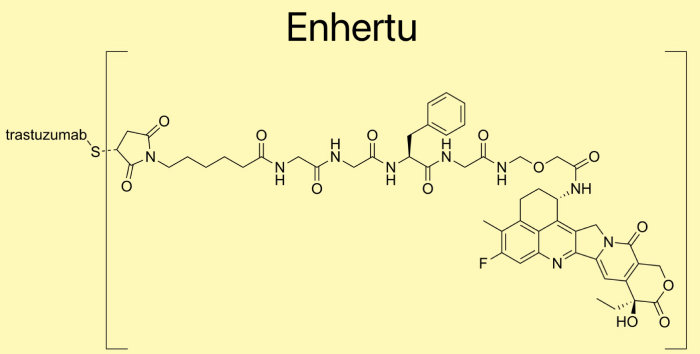Simplifying Medication Information: Is the FDA Hitting the Mark?
A recent clinical trial has shed light on the effectiveness of the U.S. Food and Drug Administration’s (FDA) proposed one-page medication handouts compared to a more detailed version developed by researchers at the University of Pittsburgh. The study, published in JAMA Network Open, used the drug mifepristone as an example and revealed that the updated handout, which quantifies a drug’s risks and benefits, was more informative and better equipped patients to make decisions.
Dr. Tamar Krishnamurti, an associate professor in the Division of General Internal Medicine at the Pitt School of Medicine and Magee-Womens Research Institute, commented, “The FDA’s proposed patient medication information handout gets a lot of things right: it’s succinct and it’s simple. But it’s missing nuances about risks and assumes that a patient already knows a drug’s benefits. Our study shows that this complexity can be explained in an easy-to-understand way, which can support people in making more informed decisions about their health.”
The Current Landscape of Patient Medication Guides
Patient medication guides are typically provided for drugs with serious risks or where specific product information could prevent severe adverse effects. However, these handouts often lack a standardized format, resulting in documents that are four or five pages long and frequently unclear.
To improve the clarity and usability of these guides, the FDA proposed a new one-page Patient Medication Information (PMI) handout for all prescription drugs used in outpatient settings. This handout aims to clearly outline directions for use, safety information, warnings, and common side effects. Despite these improvements, the proposed PMI does not require listing the medication’s benefits, quantifying its effectiveness, or explaining how the medication works.
The Need for Comprehensive Information
Dr. Krishnamurti pointed out a critical oversight in the FDA’s proposal: “The FDA may be assuming that when patients pick up their drugs, the benefits of the medication will have already been clearly communicated to them by their provider, but if someone is relying on a PMI to help them make a decision, this information should be included. It’s also important to tell people about the size of risks and benefits of a medication so that they know how likely something is to occur, not just that it’s possible.”
Krishnamurti also emphasized the importance of including a mechanistic explanation of how a drug works, allowing patients to understand what is happening in their bodies when they take the medication.
The Study: Mifepristone as a Case Example
Focusing on mifepristone—a drug used in combination with misoprostol to terminate pregnancies less than 10 weeks along—Krishnamurti and her team developed the “Decision Critical PMI.” This handout mirrored the FDA’s proposed format but included additional details: how the drug works, its effectiveness rates, and the frequency of side effects. For instance, instead of merely stating that fever and headache are common side effects, the Decision Critical PMI specifies that 48% of patients experience fever and 43% experience headaches.
To evaluate the effectiveness of different communication methods regarding mifepristone, the researchers recruited 330 female participants via an online survey. Participants were randomly assigned to review either the drug vendor’s five-page medication guide, the FDA’s PMI, or the Decision Critical PMI. They were then tested on their knowledge of the drug and asked about the usefulness of the information provided.
Findings and Implications
Participants rated both the FDA’s PMI and the Decision Critical PMI as more readable than the vendor’s five-page guide. However, the Decision Critical PMI outperformed the other two in terms of comprehension, supporting decision-making, and providing clear directions for drug use.
“Our findings support other evidence that being transparent about uncertainty and giving people the numbers to evaluate the strength of evidence about a medication themselves is best practice for risk communication,” said Krishnamurti. “Our hope is that these findings inform changes to the FDA’s final requirements for the proposed PMI, which could be an incredibly useful communication tool for patients, particularly for drugs that may be subject to popular misinformation.”
Despite the promising results, Krishnamurti noted a significant gap in the FDA’s proposal: there is no requirement for pharmaceutical companies to test the messaging in their PMIs. “The proposed regulation will tell vendors what topics they need to cover in the PMI, but there is no requirement for testing how well people read or understand the materials. User testing should be a requirement for public-facing information on all drugs,” she explained.
Commentary by SuppBase columnist Alice Winters

The University of Pittsburgh’s approach to improving patient medication information is a commendable stride toward patient empowerment and informed decision-making. However, this study also underscores a persistent flaw in the FDA’s current strategy: the assumption that healthcare providers have already communicated all critical information to patients before they receive their medication. This assumption is not only outdated but potentially dangerous, especially in a healthcare landscape where time-constrained consultations often leave patients with more questions than answers.
The FDA’s proposed PMI, while an improvement in brevity and simplicity, seems to prioritize regulatory compliance over patient comprehension. By omitting critical details such as the benefits of the medication, its mechanism of action, and quantifiable risk metrics, the FDA risks leaving patients inadequately informed about their treatment options. This gap is particularly glaring in the context of medications like mifepristone, which are not only clinically significant but also politically charged and susceptible to widespread misinformation.
Krishnamurti’s Decision Critical PMI demonstrates that complexity can indeed be distilled into digestible, patient-friendly formats without sacrificing depth or clarity. The inclusion of specific data points—like the exact percentage of patients experiencing side effects—transforms vague warnings into actionable knowledge. This level of transparency is not just beneficial; it’s essential for fostering patient trust and ensuring safe medication use.
Moreover, the study’s call for mandatory user testing of PMIs is a crucial recommendation that the FDA should not overlook. Regulatory bodies must recognize that readability does not equate to comprehension. A handout can be easy to read but still fail to convey critical information effectively. User testing can bridge this gap, ensuring that PMIs are not just regulatory checkboxes but truly informative tools that enhance patient autonomy.
In conclusion, while the FDA’s efforts to streamline medication information are a step in the right direction, they fall short of the comprehensive, patient-centered approach exemplified by the University of Pittsburgh’s research. The integration of detailed risk-benefit analyses, mechanistic explanations, and rigorous user testing should become standard practice in the development of PMIs. Only then can we ensure that patients are not just passive recipients of healthcare but active participants in their treatment decisions.



